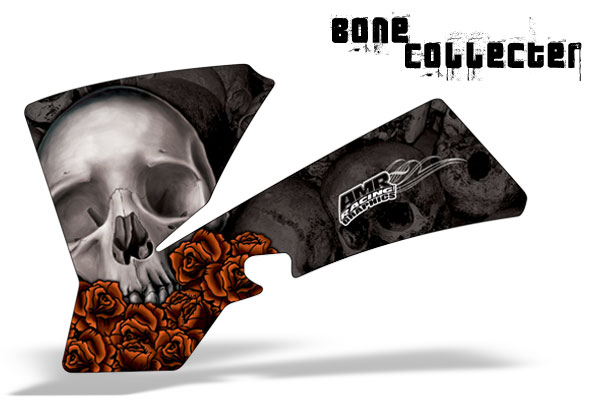01背包(ZeroOnePack):
有N件物品和一个容量为V的背包。(
每种物品均只有一件
,可以选择放或不放)
第i件物品的费用是c[i],价值是w[i]。求解将哪些物品装入背包可使价值总和最大。
用子问题定义状态:即f[i][v]表示前i件物品恰放入一个容量为v的背包可以获得的最大价值。则其状态转移方程便是:f[i][v]=max{f[i-1][v],f[i-1][v-c[i]]+w[i]}
把这个过程理解下:在前i件物品放进容量v的背包时,
它有两种情况:
第一种是第i件不放进去,这时所得价值为:f[i-1][v]
第二种是第i件放进去,这时所得价值为:f[i-1][v-c[i]]+w[i]
(第二种是什么意思?就是如果第i件放进去,那么在容量v-c[i]里就要放进前i-1件物品)
最后比较第一种与第二种所得价值的大小,哪种相对大,f[i][v]的值就是哪种。(这是基础,要理解!)
这里是用二位数组存储的,可以把空间优化,用一位数组存储。
用f[0..v]表示,f[v]表示把前i件物品放入容量为v的背包里得到的价值。把i从1~n(n件)循环后,最后f[v]表示所求最大值。*这里f[v]就相当于二位数组的f[i][v]。那么,如何得到f[i-1][v]和f[i-1][v-c[i]]+w[i]?(重点!思考)
首先要知道,我们是通过i从1到n的循环来依次表示前i件物品存入的状态。即:for i=1..N
现在思考如何能在是f[v]表示当前状态是容量为v的背包所得价值,而又使f[v]和f[v-c[i]]+w[i]标签前一状态的价值?
逆序!
这就是关键!
经典例题:
把这个过程理解下:在前i件物品放进容量v的背包时,
它有两种情况:
第一种是第i件不放进去,这时所得价值为:f[i-1][v]
第二种是第i件放进去,这时所得价值为:f[i-1][v-c[i]]+w[i]
(第二种是什么意思?就是如果第i件放进去,那么在容量v-c[i]里就要放进前i-1件物品)
最后比较第一种与第二种所得价值的大小,哪种相对大,f[i][v]的值就是哪种。(这是基础,要理解!)
这里是用二位数组存储的,可以把空间优化,用一位数组存储。
用f[0..v]表示,f[v]表示把前i件物品放入容量为v的背包里得到的价值。把i从1~n(n件)循环后,最后f[v]表示所求最大值。*这里f[v]就相当于二位数组的f[i][v]。那么,如何得到f[i-1][v]和f[i-1][v-c[i]]+w[i]?(重点!思考)
首先要知道,我们是通过i从1到n的循环来依次表示前i件物品存入的状态。即:for i=1..N
现在思考如何能在是f[v]表示当前状态是容量为v的背包所得价值,而又使f[v]和f[v-c[i]]+w[i]标签前一状态的价值?
逆序!
这就是关键!Bone Collector
Time Limit: 2000/1000 MS (Java/Others) Memory Limit: 32768/32768 K (Java/Others)Total Submission(s): 47043 Accepted Submission(s): 19603
Problem Description
Many years ago , in Teddy’s hometown there was a man who was called “Bone Collector”. This man like to collect varies of bones , such as dog’s , cow’s , also he went to the grave …
The bone collector had a big bag with a volume of V ,and along his trip of collecting there are a lot of bones , obviously , different bone has different value and different volume, now given the each bone’s value along his trip , can you calculate out the maximum of the total value the bone collector can get ?

The bone collector had a big bag with a volume of V ,and along his trip of collecting there are a lot of bones , obviously , different bone has different value and different volume, now given the each bone’s value along his trip , can you calculate out the maximum of the total value the bone collector can get ?

Input
The first line contain a integer T , the number of cases.
Followed by T cases , each case three lines , the first line contain two integer N , V, (N <= 1000 , V <= 1000 )representing the number of bones and the volume of his bag. And the second line contain N integers representing the value of each bone. The third line contain N integers representing the volume of each bone.
Followed by T cases , each case three lines , the first line contain two integer N , V, (N <= 1000 , V <= 1000 )representing the number of bones and the volume of his bag. And the second line contain N integers representing the value of each bone. The third line contain N integers representing the volume of each bone.
Output
One integer per line representing the maximum of the total value (this number will be less than 2
31).
Sample Input
1 5 10 1 2 3 4 5 5 4 3 2 1
Sample Output
14【代码如下】:# include <stdio.h> # include <stdlib.h> # include <string.h> # define max(x,y) x>y?x:y; int v[1005];//价值 int w[1005];//重量 int dp[1005][1005]; int main() { int T; int N,V; scanf("%d", &T); while(T--) { scanf("%d%d",&N,&V); memset(dp,0,sizeof(dp)); for(int i=1; i<=N; i++) scanf("%d",&v[i]); for(int i=1; i<=N; i++) scanf("%d",&w[i]); for(int i=1; i<=N; i++) for(int j=V; j>=w[i]; j--) //放入背包 { if(dp[i-]) { dp[i][j]=max(dp[i-1][j],dp[i-1][j-w[i]]+v[i]); } } printf("%d\n",dp[N][V]); } return 0; }
























 616
616

 被折叠的 条评论
为什么被折叠?
被折叠的 条评论
为什么被折叠?








